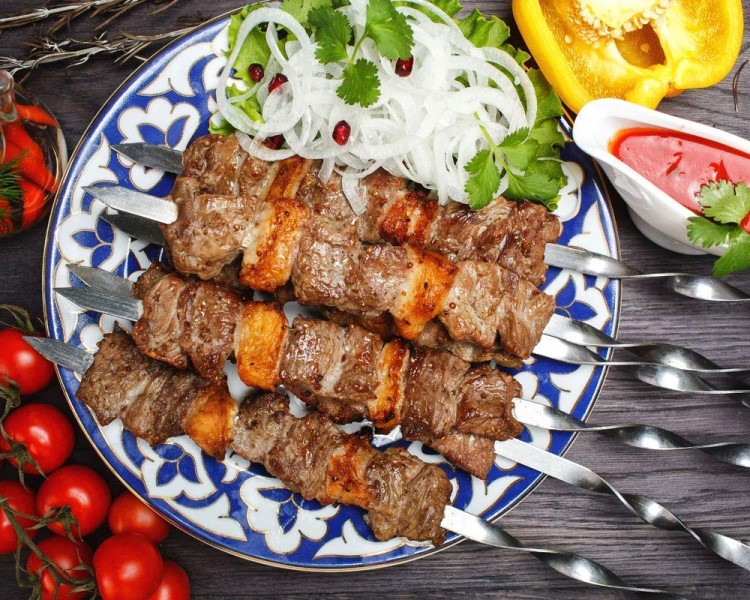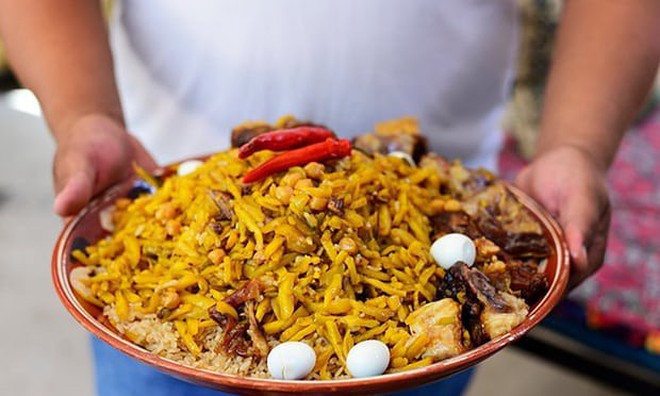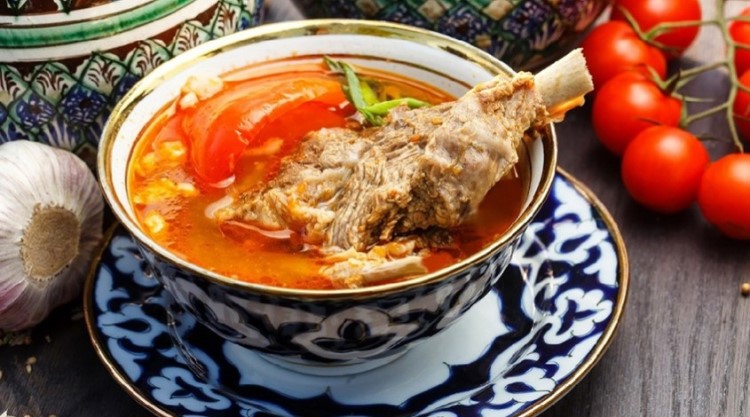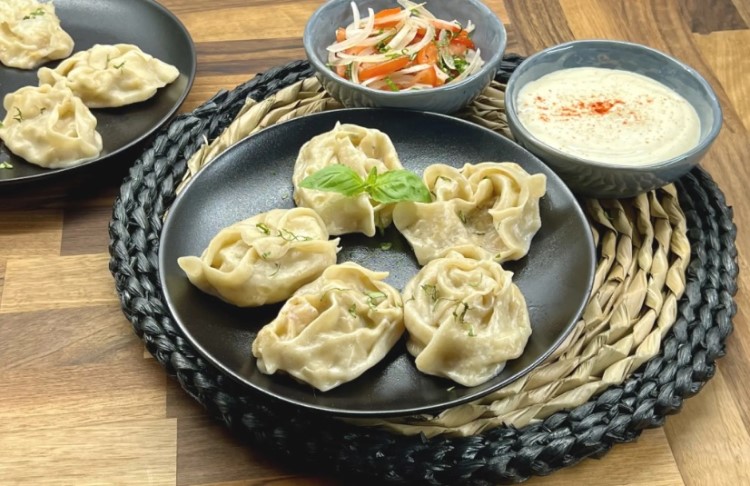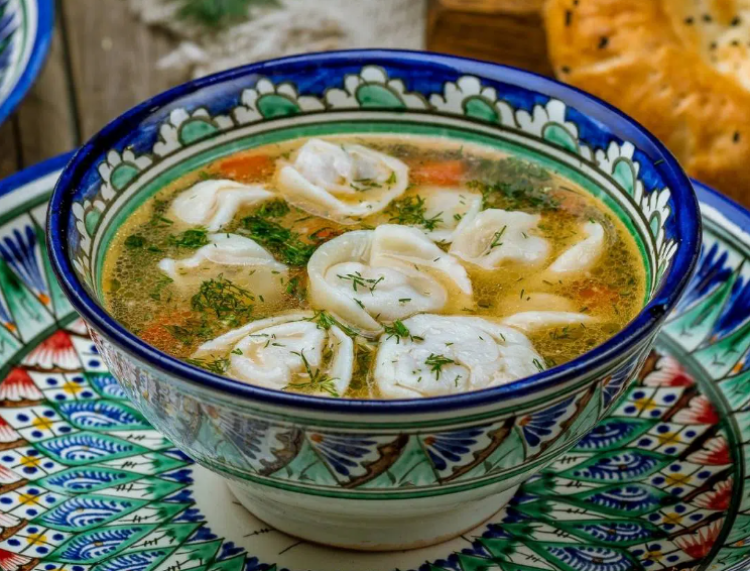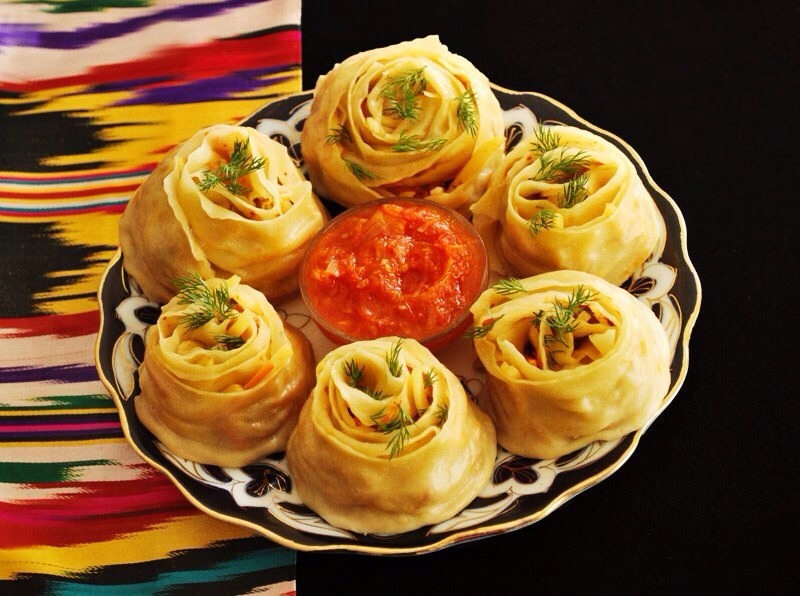Uzbekistan is still a destination that remains under the radar for most travelers but some of the country’s most iconic monuments like the Ancient City of Khiva, the Registan in Samarkand, and the Kaylan Minaret of Bukhara are getting a fair dose of Internet fame. Uzbek food, on the other hand, not so much. That’s why we decided to write this article; because the delicious foods in Uzbekistan is actually to die for. Their cuisine is a mix of Turkish, Slavic, Chinese, Middle Eastern, and Mediterranean influences, so one could say that Uzbek cuisine indeed, does offer the best from all worlds.
Contents
9 Best Foods in Uzbekistan
Shashlyk
Shashlyk is a very popular meal in a region stretching from Central Asia to Eastern Europe and the Mediterranean. It is usually made from mutton or beef; alternating pieces of meat and fat are well spiced and marinated. It is served with pickled onions. It can be ordered as an add on to the main national dishes or separately as a side dish. In many cafes, you can also get chicken, chicken wings or assorted shashlyks, prepared just like at barbecues over hot coals.
Laghman
Lagman is basically handmade pulled noodles in a meat or vegetable sauce. The meat is usually beef, while the vegetables include bell peppers, garlic, onion and fresh herbs. Depending on the location, additional vegetables are added. It has numerous variations from soups to main course dishes. Lagman is a soup, Qavurma Lagman is served as a main dish without broth to it.
Plov
Plov (sometimes also called “osh”) is one of the most delicious foods in Uzbekistan which is widely considered to be the national dish of Uzbekistan. It’s a hearty rice pilaf and you’ll probably notice that the word “plov” and “pilaf” are essentially the same. You can expect a heaping portion of rice that has been cooked together with lamb or beef, onions. garlic, raisins, carrots, and apricots. Plov is not only the most famous dish in Uzbekistan, it is also one of the most delicious.
Fried Lagman
Another wonderful way to enjoy those delicious hand-pulled lagman noodles is stir-fried. The noodles are pan-fried with peppers, onions, tomatoes paste, and whatever other vegetables the kitchen has on hand. It basically tastes like stir-fried spaghetti. And, if you’re lucky, you might find it topped with a fried egg!
Shurpa
Shurpa is an Uzbek lamb soup that you’ll find in almost every eatery in the country. In addition to chunks of lamb, you can expect thick slices of vegetables such as carrots, potatoes, and onions. Spices such as fresh dill and parsley are also used to add flavor to the soup.
Shurpa is a great starter to any meal, especially if you’re visiting Uzbekistan during the colder months and need to warm up after a day of exploring the country’s beautiful Islamic architecture.
Manti
Manti is probably Uzbekistan’s most beloved appetizer. It’s basically a large steamed dumpling that looks a lot like momos filled with ground meat, most usually ground lamb or beef topped with some extra fat to enhance the flavor. Traditionally, Manti is served with yogurt (for dipping) and is eaten with hands, so don’t be shy.
Kuza Shurpa
Kuza shurpa is one of the most common soup appetizers of Uzbek cuisine. It’s a great starter for any meal and perfect winter food. It consists of lamb on the bone, green peppers, potatoes, and carrots. The portion in which is served is quite large and a lot of tourists are surprised when they hear this is only an appetizer.
Chuchvara
The best way to describe Chuchvara is as a mini-Manti. You can find them prepared in a variety of different ways. The most common version is steamed but they can also come in a soup or deep-fried. The soup version seems to be inspired by Chinese cuisine, more particularly, the popular wonton soup and the deep-fried version was introduced because it’s easier (and less messy) to eat than the steamed Chuchvara.
Honim
If you’re looking for a dish that will wake up your taste buds, you should definitely try Honim. Honim is the biggest dumplings of the Uzbek cuisine stuffed with potato strips topped with tomato sauce, fresh onions, and chili peppers. The final result is a tender delicately-prepared dumpling that (surprisingly) tastes a lot like Italian ravioli.

